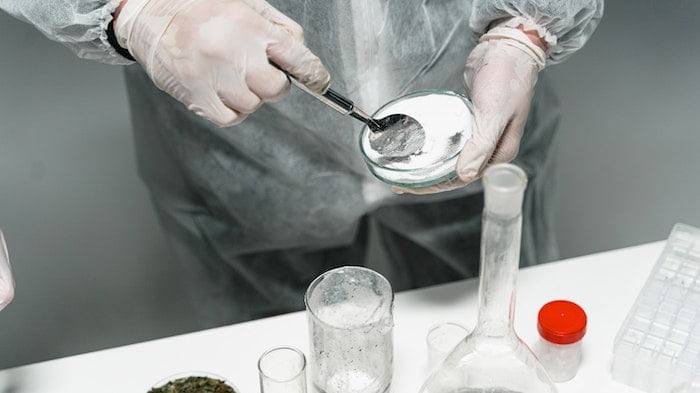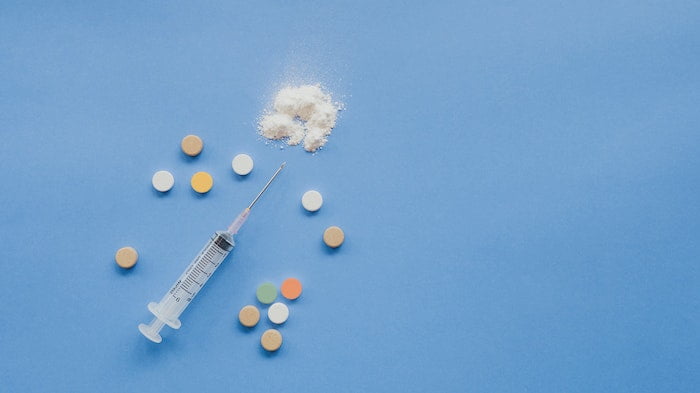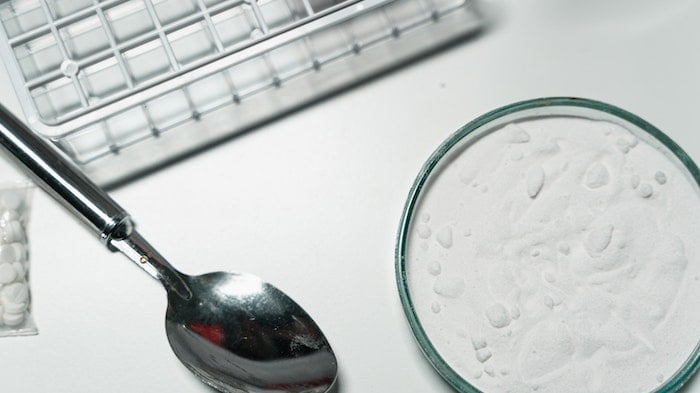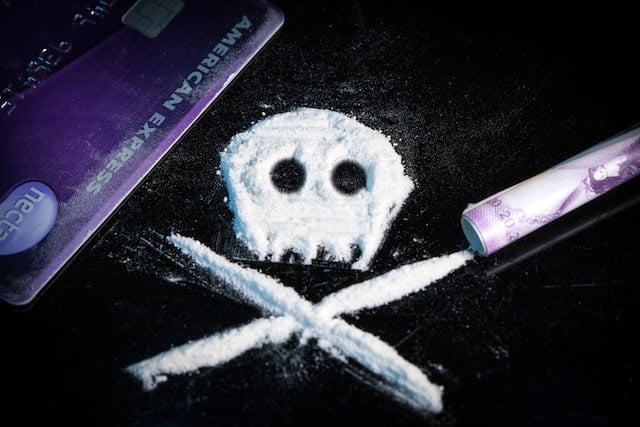What Is the Difference Between Crack and Cocaine?
Cocaine is a type of illegal drug.
It is known as a stimulant. Stimulants are drugs that have psychoactive effects.
Cocaine and other stimulants work by speeding up messages from the body and the brain, giving a sense of a euphoric rush that can be pleasant for most users. [1]
Cocaine is derived from a type of plant called a coca bush (known as Erythroxylum coca) that grows naturally in South America.
Cocaine is known by many other terms, including the following ‘street names’:
- blow
- Charlie
- coke
- snow
- toot
- white lady
Cocaine is a type of class A drug.
That means cocaine is considered to be both very dangerous and also illegal.
You can be prosecuted if you are found with cocaine or any other class A drug in your possession.
You may be sentenced to up to 7 years in prison or an unlimited fine. In some cases, you may be given a prison sentence as well as pay a fine. [2]
Types of Cocaine

There are three different kinds of cocaine:
- Cocaine hydrochloride
- Crack
- Freebase
Cocaine hydrochloride is the ‘standard’ or ‘expected’ form of cocaine. It comes in the form of a white powder.
Crack is cocaine in a crystallised form. Unlike powder cocaine, crack is not always white. Sometimes, it can be cream, clear, or even tinged with pink or yellow.
Freebase, like cocaine hydrochloride, is a white powder. Freebase is often ‘purer’ than cocaine hydrochloride. [3]
Powdered cocaine and crack cocaine are thought to be the most readily available and commonly used types of cocaine. However, it is thought that most users of cocaine take the drug when it is in powder form.
Cocaine and Crack: What Are The Differences?

The main difference between cocaine and crack cocaine is the way in which they are taken
How Is Cocaine Used?
The way that cocaine is taken depends on the type of cocaine that is being used.
- Powder cocaine (cocaine hydrochloride) is usually inhaled through the nose (snorted), rubbed into the gums (ingested or swallowed) or taken intravenously (injected).
- Crack cocaine is usually smoked [3]
Drug Chemistry
As cocaine and crack cocaine are derived from the same plant, there are no huge differences between cocaine hydrochloride and crack cocaine in chemical terms.
Often, powder cocaine is ‘cut’ with another substance.
This is when another white powder product (such as sugar or talcum powder) is added to the cocaine in order to make the product go further.
This means that there is often a mix of products in the drug that is not regulated and can increase the danger of use. [4]
Duration of Effect
Whilst cocaine and crack cocaine tend to generate the same (or very similar) side effects after use, the way that cocaine is taken changes the length of time that the high (and side effects) last for.
How Long Does a Cocaine High Last For?

Snorting Cocaine
When hydrochloride or powder cocaine is taken through inhalation or snorting, the effects of the drug are usually experienced between 3 and 5 minutes after it is first taken.
Once the effects begin, the impact of cocaine taken through inhalation can be felt for up to 20 minutes.
Injecting Cocaine
When hydrochloride or powder cocaine is taken intravenously (injected into the bloodstream), the effects of the drug are usually experienced between 5 and 10 seconds after it is first taken.
Once the effects begin, the impact of cocaine taken through the injection can be felt for up to 20 minutes.
Swallowing or Ingesting Cocaine
When hydrochloride or powder cocaine is taken orally (swallowed, ingested, or rubbed into the gums), the effects of the drug are usually experienced between 10 and 30 minutes after it is first taken.
Once the effects begin, the impact of cocaine taken through oral means can be felt for up to 90 minutes.
How Long Does a Crack High Last For?
When crack cocaine is smoked, the effects of the drug are usually experienced between 15 and 20 seconds after it is first taken.
Once the effects begin, the impact of smoking cocaine can be felt for up to 20 minutes. [5]
Side Effects

The side effects of cocaine and crack cocaine are largely similar.
Generally, the two forms of cocaine tend to generate the same side effects after use.
Physical Side Effects of Using Cocaine include:
- an increase in heart rate
- an increase in blood pressure
- an increase in the temperature of the body
- pupils appear to be larger (dilated pupils)
- a decrease in appetite
- involuntary twitching in the muscles
- feeling restless
- vertigo (a sense that the room is moving or spinning)
- feeling dizzy
- feelings of physical strength
- experiencing a dry mouth
- difficulty sleeping, or disruption of a sleep cycle
- lower sensitivity to pain
Psychological Side Effects of Using Cocaine include:
- a rush of energy
- increased confidence
- increased alertness
- feeling euphoric or overly happy
- increased chattiness
- increased sex drive
- feelings or urges towards violence
- paranoia
- anxiety [6]
How Will Using Cocaine Affect Me?

Because everyone has different biology, the effects of taking cocaine will not feel the same for everyone.
Factors that may alter the way in which cocaine affects the body include:
- your physical health
- your psychological health (cocaine can create – or worsen pre-existing – symptoms of anxiety and paranoia)
- your biological makeup (your body mass, height, etc.)
- your tolerance to drugs (if you are a previous cocaine user, if you have taken drugs before, and how frequently)
- what else is in your system (the use of any other drugs, whether prescription, illicit, or alcohol)
- the chemical make-up of the drug (each time you take a drug, it may alter in strength or actual chemical composition)
Regardless of these different factors, professionals state that there is no safe level to use cocaine, suggesting that even the most minimal, sporadic and ‘casual’ use can lead to physical and psychological complications in both the short and long term.
Any use of cocaine can have a negative impact on your quality of life. [7]
The Risks of Cocaine And Crack

Whilst some of the side effects of using cocaine can be difficult enough, prolonged or heavy use of cocaine (in any form) can come with many different risks.
Overdose
There is a high risk of overdose when using cocaine.
An overdose is when you take too much of a drug, and the body struggles to handle it.
An overdose is a kind of poisoning. The way that a body reacts during an overdose is in response to having high levels of a toxic substance in the system.
Overdose can either be intentional (taken purposefully) or accidental.
Symptoms of Cocaine Overdose:
- irregular or sporadic heartbeat
- heart attacks
- seizures, convulsing or fitting
- strokes
- trouble with breathing
- very high blood pressure
- difficulty in regulating and maintaining a healthy body temperature
- hallucinations
- organ failure [8]
The Risks of Injecting Cocaine
Using cocaine through an injection means that the drug directly enters the bloodstream.
injecting cocaine carries a set of specific risks including:
- causing damage to the vein (collapsing veins, etc.)
- a higher risk of overdose, as the amount you take is not controlled
- infection
- tetanus
Injecting cocaine also carries the risks of a specific needle or sharps-related illnesses such as:
- HIV/AIDs
- Hepatitis B
- Hepatitis C [9]
The Risks of Snorting Cocaine

Snorting cocaine can carry some specific risks to users.
These may include:
- a higher risk of nasal infections
- soreness to the nose and throat
- regular nosebleeds
- damage to the septum (with heavy use, the tissue can wear away)
- a reduced ability to smell [10]
The Risks of Smoking Crack Cocaine

Smoking crack cocaine means that the drug is in direct contact with the lungs.
This means that smoking crack can cause specific damage to the respiratory system:
- difficulty breathing
- symptoms of asthma
- the development of lung conditions
The Risk of ‘Mixed’ or ‘Cut’ forms of Cocaine

Because drugs are created, distributed, and taken illegally, their contents are not rigorously monitored and measured.
There is little or no quality control.
Because drugs are regularly ‘cut’ or mixed with other substances to keep prices low and increase profit, this means that is impossible to know what is actually in the drug that you are taking.
By using illicit drugs, you are putting yourself at risk not just of the effects of the cocaine base itself, but of what else has been added to it.
This means that you do not know what you are putting into your body, and what it could do to you. [11]
Other Physical Risks

The general physical risks of long-term, prolonged, or heavy use of cocaine in any form may include:
- addiction
- heart complications
- kidney failure
- lung conditions
- increased risk of stroke
- increased risk of seizures
- hypertension
- effects on reproductive organs (sexual dysfunction)
Cocaine Psychosis
Research has shown that cocaine can induce a psychosis that is similar to that seen in individuals with a diagnosis of paranoid schizophrenia.
It has been suggested that cocaine can cause short-term psychological symptoms but can also result in the development of mental health disorders in the long term.
Symptoms of cocaine psychosis can include:
- paranoid delusions
- auditory hallucinations (seeing things that are not there)
- visual hallucinations (hearing things that are not there)
- tactile hallucinations (feeling things that are not there)
- aggressive, unpredictable, or generally erratic behaviour [12]
Psychological Risks
Other psychological risks of long-term cocaine use include:
Treating Crack or Cocaine Addiction

If you believe you or a loved one are battling a cocaine addiction, there are many different addiction treatment options available to you.
It can be difficult to be open and honest with medical professionals about our experiences with substances.
However, by reaching out for help, you can begin the process of accessing support from a trusted, qualified healthcare provider to begin to tackle your cocaine addiction head-on.
There is no difference between the kind of treatment you will receive for cocaine or crack cocaine addiction – they both function on the same principles.
Pre- Treatment
Before accessing support, you will need to go through an assessment process.
An assessment is when you speak with an appropriate clinician about what you are experiencing.
You will be asked questions about your thoughts, feelings, and habits regarding your cocaine use.
If it is determined that you would benefit from formal treatment, you can then begin the admissions process.
What Are The Different Kinds of Cocaine Addiction Treatment?

The main decision to make when assessing your support options will be if you will access care via an inpatient or outpatient treatment programme.
Treatments for cocaine dependency are available in either format.
The decision between inpatient and outpatient care will depend on your circumstances, your lifestyle, and the opinions of your medical team.
Whether you receive help as an inpatient or outpatient, it is highly recommended that you practice abstinence during treatment at cocaine rehab – that is, that you do not use cocaine whilst in the active treatment phase.
Some of the various psychological treatment options available for cocaine addiction include:
- Brief Interventions
- Codependency Treatment
- Cognitive Behavioural Therapy (CBT)
- Dialectical Behavioural Therapy (DBT)
- Family Therapy
- Group Therapy
- Holistic Therapy/ Alternative Therapy (Art Therapy, Music Therapy, Equine Therapy, etc).
- Individual Therapy (1-1 Therapy)
- Motivational Enhancement
- Motivational Interviewing
- Twelve-Step Facilitation Treatment (TSF)
- Contingency Management
- Therapeutic communities or self-help groups
- Cocaine anonymous
By engaging with these various treatments for cocaine dependence, you will decrease your chances of relapse, and increase the likelihood of a full recovery.
Relapse is when you begin to use a substance that you had formally stopped using or recovered from.
The goal of attending therapy during your weeks of treatment is to attend to any difficult thoughts or feelings that may have led you to use cocaine and help you to readjust your relationships to yourself, others, and substances.
Accessing Support
If you are concerned about cocaine use, Rehab Recovery can give you non-judgemental advice and support for yourself, a family member, or a friend.
You can call us on 0800 088 66 86, or you can request a call back to speak to a member of the team.
If you would prefer not to speak over the phone for any reason, the Rehab Recovery chat lines are open 24/7 to provide you with support and to answer any questions you may have about accessing support for cocaine addiction.
References
[1] https://adf.org.au/drug-facts/cocaine/
[2] https://www.nidirect.gov.uk/articles/drugs-and-crime
[3] https://www.betterhealth.vic.gov.au/health/healthyliving/cocaine
[4] https://drugpolicy.org/drug-facts/cocaine/difference-crack
[5]https://nida.nih.gov/publications/research-reports/cocaine/what-are-short-term-effects-cocaine-use
[6] https://www.betterhealth.vic.gov.au/health/healthyliving/cocaine
[7] https://www.ncbi.nlm.nih.gov/books/NBK430976/
[8] https://nida.nih.gov/publications/drugfacts/cocaine
[9] https://adf.org.au/drug-facts/cocaine/
[10] https://adf.org.au/drug-facts/cocaine/
[11] https://www.ncbi.nlm.nih.gov/pmc/articles/PMC6474566/
[12] https://pubmed.ncbi.nlm.nih.gov/1752853/
[13] https://adf.org.au/drug-facts/cocaine/




